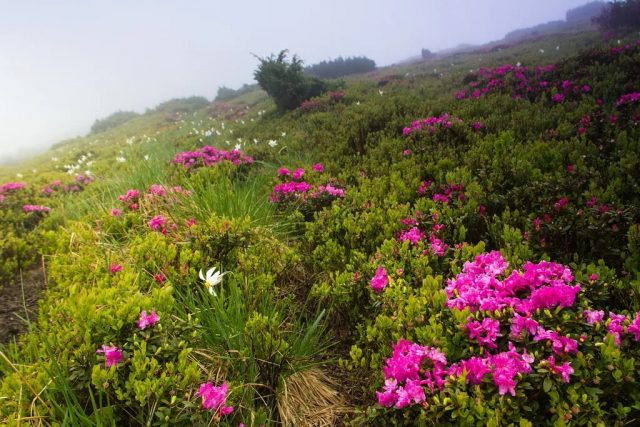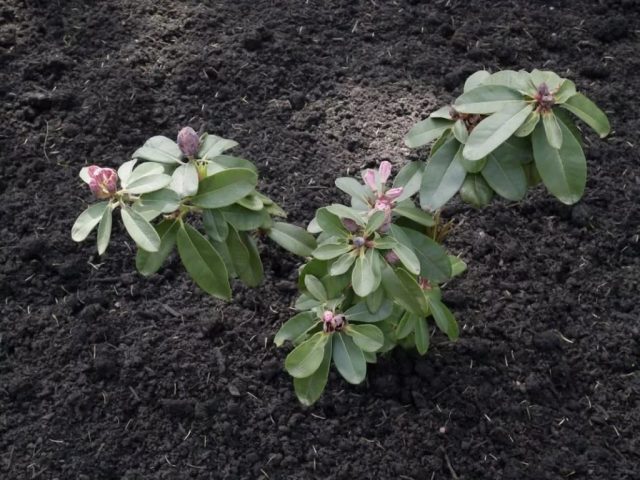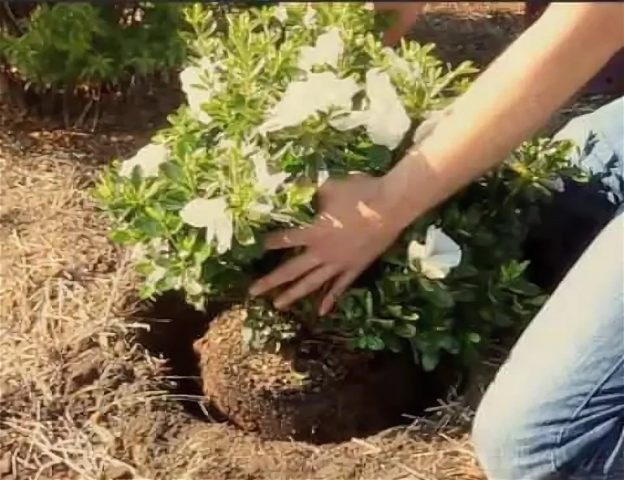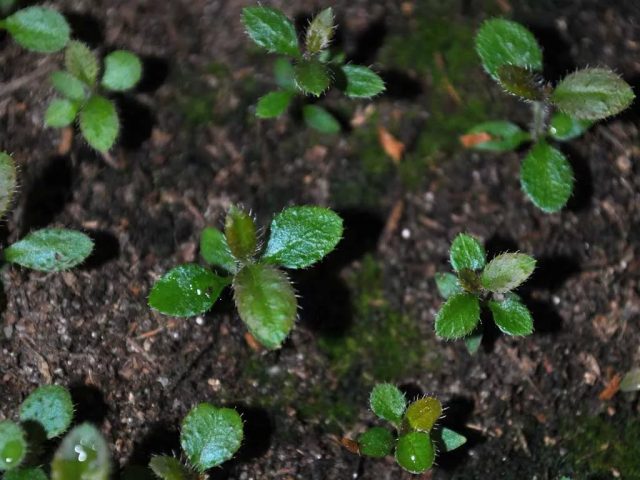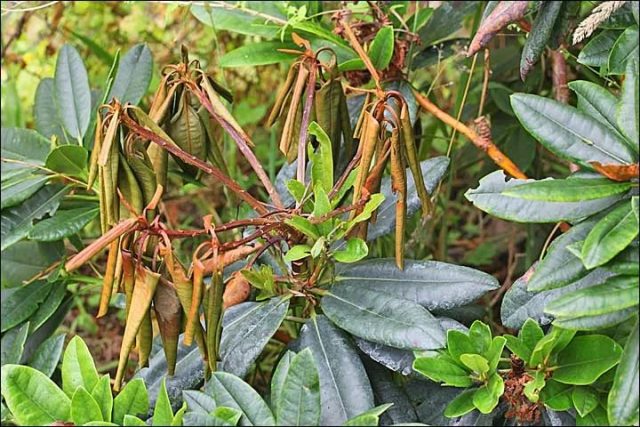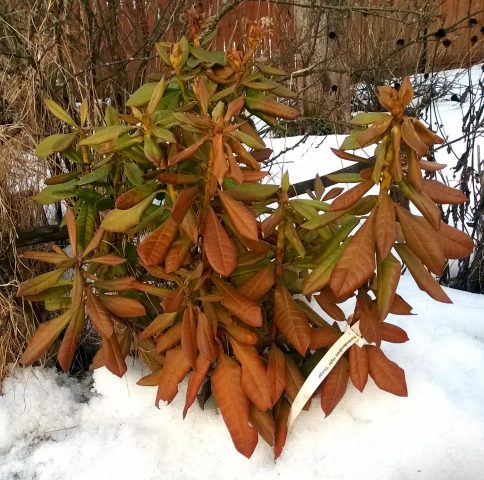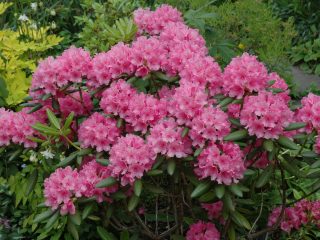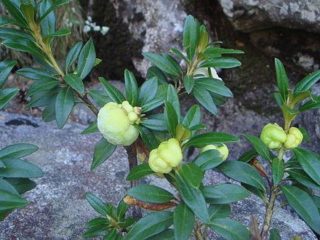Content
- 1 Where rhododendron grows in Russia
- 2 Useful properties of rhododendron and contraindications
- 3 How to plant rhododendron in spring
- 4 How to transplant a rhododendron to another location
- 5 How to care for rhododendron in the garden
- 6 How fast rhododendron grows
- 7 What to do if the rhododendron does not grow
- 8 What to do if rhododendron turns brown after winter
- 9 What to plant next to rhododendron
- 10 Conclusion
Rhododendrons are beautiful ornamental shrubs and shrubs of the Heather family. Due to their lush and long flowering, a variety of shapes and colors, these plants are widely used for decorative purposes, landscape design, and when creating flower arrangements. Planting and caring for rhododendrons in the open field requires certain skills from the grower, since most of our country is not included in the natural distribution area of this plant.
This article describes the planting process and the main measures for caring for this shrub, showing photos of rhododendron flowers.
Where rhododendron grows in Russia
The very word "rhododendron" in translation means "rose tree". In wild forms, this plant is found in Southwest Asia, Japan, China and Korea, as well as in North America and Europe. On the territory of modern Russia, you can find about 20 species of rhododendrons, including:
- Daursky.
- Adams.
- Smirnov.
- Caucasian.
- Yellow.
- Pontic.
The main habitat of wild-growing rhododendrons is the Caucasus. In addition, in natural conditions, these plants are found in the south of Siberia and the Far East, as well as in Altai.
Useful properties of rhododendron and contraindications
In addition to decorative purposes, rhododendrons are also used as medicinal plants. A decoction of the leaves of this shrub has a number of medicinal properties:
- Strengthens sweating, promotes the elimination of excess fluid, toxins, heavy metals from the body.
- Normalizes the work of the heart, reduces arterial and venous pressure.
- Has a calming and expectorant effect, relieves asthma attacks.
- Serves as a pain reliever.
- Has a bactericidal effect, is effective in diseases of the gastrointestinal tract.
Baths with rhododendron remarkably soothe the nervous system, relieve neuralgic pains, attacks of sciatica. A decoction of flowers is indicated for nervous disorders as a sedative and hypnotic. It can also be used to treat gastritis, enteritis and diuretic.
Despite the many positive effects, it is necessary to use decoctions or infusions of flowers and rhododendron leaves with great care. The plant contains in its composition andromedotoxin - a substance that inhibits the central nervous system. In large quantities, this neurotoxin can lead to dizziness, loss of coordination, seizures, and in severe cases, even death is possible. It is not recommended to use rhododendrons for the treatment of people with kidney diseases, allergic reactions, and it is also impossible to use decoctions or infusions from this plant for pregnant women.
How to plant rhododendron in spring
For planting on the site, seedlings of the kind you like can be purchased in specialized stores or nurseries.They are sold in special containers.
Until the time is right for planting, you can continue to hold the seedling in them.
When to plant rhododendrons in spring
The best time to plant rhododendrons outdoors in spring is April or May, depending on the region. At the time of disembarkation, there should be no probability of return frosts, and the earth should completely warm up to a temperature of + -8-10 ° С.
Where to plant rhododendron
To plant a rhododendron, it is very important to choose the right place. If the site is not suitable, the plant will constantly hurt and may die. These shrubs do not like bright light. The sun's rays burn the foliage, brown dots and spots appear on it. The optimal place for planting rhododendrons is partial shade or shade. The site should be closed, the shrub does not like the cold wind. Attention should be paid to the depth of groundwater during planting, it should be at least 1 m.Otherwise, the bed will have to be poured, increasing its height. When planting rhododendrons, you should avoid wetlands and places where water stagnates. Excess moisture causes root rot in these plants.
Soil for rhododendrons
Ordinary garden soil is not suitable for planting rhododendrons. The soil for growing these plants must be loose, allow water and air to pass through well, and also have a pronounced acid reaction. Such a nutritious soil can be prepared independently before planting by mixing in equal proportions high moor peat, river sand, soil from under coniferous trees and ordinary garden soil. Ready-made substrate can also be purchased in a specialized store, most often it is sold as soil for azaleas, which are a subspecies of rhododendrons.
How to properly plant a rhododendron in spring
Before planting a rhododendron in the spring, planting holes are prepared in advance so that the soil has time to settle and become saturated with air. Drainage must be laid on the bottom with a layer of 15-20 cm. Construction expanded clay is best suited for this purpose, you can use broken brick, crushed stone, coarse sand. On the day of planting, the seedling in the container is watered abundantly in advance. So it will be easier to extract it along with the clod of earth on the roots. A neatly pulled out seedling is placed in the pit, holding it vertically, and gradually the recess is filled with a nutritious substrate. The root collar of the plant does not deepen when planting, it should be flush with the ground.
After the hole is completely filled, the root zone of the seedling should be watered abundantly. If the earth settles, you need to add soil. After planting, the land around the bush is mulched with peat or coniferous litter. Mulching retains moisture well in the soil, preventing its evaporation. In addition, mulch suppresses weeds and retains the loose structure of the soil of the root zone for longer, normalizing air exchange.
How to transplant a rhododendron to another location
The mistake with the choice of the planting site of the rhododendron can only be corrected by its transplant. The bush tolerates this procedure quite easily, the main thing is that it does not coincide in time with the flowering of the plant. The best time to transplant rhododendrons is from mid-April to early May, as well as late August, September and early October. Shrubs should be transplanted on a cool and cloudy, but not rainy day.
Transplanting should be carried out only with a lump of earth on the roots. The older the bush, the more developed its root system, therefore, a clod of earth will need to be made more. For adult rhododendrons, it is necessary to retreat from the middle of the bush 80-100 cm. The bush is dug in from all sides and carefully removed from the ground. It is necessary to move or transport it to another place carefully, trying to keep the earthen lump intact.
The preparation of planting holes and the procedure for planting bushes is carried out in the same way as when planting a seedling.If rotten roots were found during the transplantation, then they need to be cut off, and the sections should be treated with a fungicide solution.
How to care for rhododendron in the garden
Many gardeners consider these ornamental shrubs to be capricious, but the problems with growing and caring for rhododendrons are largely exaggerated. With the right choice of variety, planting site and competently done preliminary work, anyone can cope with the cultivation of these plants.
Scheme of picking seedlings of rhododendrons
Rhododendrons are often propagated by seed, obtained from their own plants. This method is quite viable, however, from the moment of planting the seeds to the beginning of flowering of the bush, it can take up to 10 years. The advantage of the method is that the seed can be obtained free of charge and in sufficient quantity. Seeds of rhododendrons are sown in wide containers filled with an identical nutrient soil or substrate for azaleas. After the emergence of seedlings, the seedlings dive, planting young plants in more spacious containers and increasing the distance between neighboring seedlings.
Completely the scheme of picking seedlings of rhododendron is as follows.
activity | Duration of the | Seedling spacing |
Landing | March-April 1 year | 0.5 cm |
1 pick | June 1 year | 1.5 cm |
2 pick | February 2 years | 4 cm |
Planting in seedling beds or in an individual container | April 3 years | 10-15 cm |
Disembarkation in OG | April-May 4 years | 0.7-2 m depending on the size of the future bush |
How often to water rhododendron
Rhododendron loves moisture, but at the same time it is very sensitive to its excess. Therefore, after planting, watering should be frequent, but moderate. Lack of moisture can be easily identified by the leaves of rhododendron, at this time they become dull, lose their natural shine and sag. For irrigation, you need to use softened water, preferably rainwater or settled. It is advisable to acidify it a little, adding 1-2 tsp to 10 liters of water. citric acid or a few handfuls of high-moor peat. Watering is done under the root of the bush, the root zone should be irrigated evenly.
Feeding rhododendron
Lack of nutrients very quickly affects the appearance of rhododendron bushes, rapidly growing and abundantly flowering bushes "pump" them out of the soil quite intensively. Deficiency of some trace elements leads to yellowing and wilting of leaves, weak flowering, and a decrease in frost resistance. Therefore, rhododendrons are fed several times per season. To do this, you can use both organic matter and mineral fertilizers that acidify the soil:
- urea;
- potassium sulfate;
- ammonium nitrate.
From organic fertilizers, rotted manure, which is introduced into the root zone of the bushes during loosening of the soil, has proven itself well. All fertilizers are usually applied in the form of aqueous solutions. Before using them, the root zone must be watered abundantly with water.
A good result is given by universal fertilizers for ornamental bushes, for example, Kemira-Universal, Pocon, Agrecol. Apply them in accordance with the instructions.
The scheme for applying mineral fertilizers for rhododendrons is as follows.
Terms of application | Fertilizer | Dosage |
Early spring (before flowering) | Ammonium sulfate + magnesium sulfate | 50 g of each component per 1 sq. m |
Summer (after flowering) | Potassium sulfate + ammonium sulfate + superphosphate | 20 g + 40 g + 20 g per sq. m |
Summer (late July or early August) | Ammonium nitrate | 60 g for 20 liters of water for each bush |
Late fall | Potassium sulfate + superphosphate | 15 g + 30 g for each bush |
A useful video about feeding rhododendrons can be viewed below:
Trimming and shaping
Pruning rhododendrons after planting is usually done for sanitary purposes only. In spring and autumn, the bushes are examined, cutting out damaged, diseased and dried shoots. Adult bushes periodically rejuvenate, removing part of the old shoots in the spring and growing new ones instead. You can remove no more than ¼ of the crown at a time. rhododendrons have a regular rounded compact crown. It is quite decorative in itself, therefore, the formation is most often not performed. To increase the density of the bush, the stems in the first years after planting are sometimes pinched at a height of 0.25-0.3 m, this contributes to enhanced lateral branching.
Protection against diseases and pests
Violations in planting and caring for rhododendrons often lead to diseases of this shrub.
Most often, plants are affected by the following diseases:
Disease | Symptoms | Treatment |
Tracheomycotic wilting | Root rot. Fungi clog the channels through which nutrients move. The leaves turn brown and crumble, the plant withers. | Infected areas are cut out and destroyed as soon as possible. The bushes are sprayed with Bordeaux liquid. Prevention - treatment of the root zone with Fundazol. |
Late blight | It develops in conditions of excessive moisture or disturbances in planting and care, most often due to excessive watering of the bushes. Rot appears on the roots, brown spots on the trunk. The plant turns yellow and dies. | At the initial stage, the development of the disease can be stopped by pruning the problematic parts of the plant and treating the bushes with Bordeaux mixture, Fundazon or Quadris. In case of severe damage, the bushes must be dug up and burned. |
Bacterial cancer | Dark, hard, rounded bumps appear on the roots and in the lower part of the plant, which then begin to rot. | Prevention and treatment is the regular treatment of the bushes with fungicides; in case of severe damage, the plant must be dug up and burned. |
Gray rot | Appears on all parts of the plant in the form of blurry brown spots. If the development of the disease is not stopped, the bush will rot completely. | Cutting off the affected parts of the plant. Regular treatment of bushes with fungicides. |
Spotting | Rounded brown spots with a thin brown border appear on the trunk and leaves. Over time, spore pads of the fungus develop inside them. | Infected stems are cut and burned. The bushes are treated with fungicide solutions or Camulus. |
Cercosporosis | Usually develops on the lower parts of the plant. It is found by brown-reddish spots of irregular shape, eventually merging with each other. | Prevention and treatment are standard - removal of contaminated parts and treatment with fungicides. |
Rust | It is detected by a characteristic dusty coating of red-brown color, reminiscent of rust. The disease usually manifests itself in the fall. | The affected leaves are cut and burned, the bushes are treated with copper-containing preparations. |
Chlorosis | A disease associated with a lack of nutrients or increased acidity of the soil. The leaves begin to turn yellow, while there are clearly visible green veins. | The disease does not require special treatment and passes with the normalization of acidity and the introduction of the necessary dressings. |
Rhododendrons are often attacked by insect pests. Here are the most common ones.
Name | What amazes | Methods of control and prevention |
Furrowed weevil | It feeds on all parts of the plant. It can completely destroy roots, bark, and eats foliage. The bush loses its decorative effect, in severe cases it can die. | Spraying bushes with insecticides of various effects at night. Since the beetles live in the ground, it may be necessary to transplant to a new place, while heat treatment of the old site is carried out. |
Spider mite | It feeds on plant sap. At the site of the development of the tick population, a nest of a thin web appears over time, the plant is suppressed and dries up. | Treatment of bushes with pesticides and acaricides with a frequency of 1 time in 7-10 days. |
False shield | It is sucked to the stems of the bush, feeding on the juices of the plant. With large populations, it is a serious hazard. | Rubbing the stems with alcohol or soap solution. Treatment with drugs Aktellik, Aktara. |
Rhododendra bug | It feeds on leaf juices, making punctures in them from the back. Black dots appear in such places. | Treatment of plants with insecticides of various actions. Preparations must be alternated, otherwise the insect will develop immunity. |
Tobacco thrips | It feeds on the leaves and flowers of rhododendrons, causing them to fall prematurely. | Treatment of bushes with drugs Metaphos, Phosphamide, etc. |
When to open rhododendrons after winter
Caring for rhododendrons in the spring after winter begins with the removal of the winter shelter. You can start removing it gradually, when severe frosts are no longer expected. Too early this should not be done, if temperatures at night drop below -10 ° C and a cold wind blows, then the bushes may suffer. You can open the rhododendrons already at a temperature of - 5-7 ° C. At the same time, they leave protection from the sunny side, since the foliage can get burns from the bright spring sunlight. It is imperative to open the rhododendrons when the air temperature reaches positive marks, otherwise the bush may undergo podoprevanie.
Spring care video for rhododendrons
How fast rhododendron grows
Most rhododendrons grow rather slowly, their annual growth after planting can be only 10-15 cm. However, the growth rate of these plants directly depends on the type of plant, the quality of care and the place of growth. If the rhododendrons are planted correctly, the soil meets all the requirements and is fertile enough, then the annual growth of the bush after planting can be from 20 to 40 cm. Deciduous species of rhododendrons grow faster, the growth of evergreens is slower.
What to do if the rhododendron does not grow
Rhododendrons on the site grow only in the shade, so excess sun is often the only reason why the bushes refuse to grow. Weak annual growth indicates an incorrect planting site and poor soil. The problem is solved by transplanting the bush to a more suitable place, as well as by introducing a complex of dressings. It is also recommended to analyze the soil for composition and acidity. Rhododendrons grow only on acidic soils, so it is recommended to regularly acidify the soil in the root zone of the bush.
What to do if rhododendron turns brown after winter
There may be several reasons why rhododendron leaves turn brown after winter:
- disease;
- improper planting (if the plant was planted or transplanted the day before in the fall);
- early opening of the bush after wintering.
Diseases in the spring are quite rare. Two other reasons are much more common. This is due to the fact that the root system of the bush has not yet fully restored its working capacity in the frozen ground, while the aboveground part of the plant has already started to grow under the influence of solar heat. In this case, the rhododendron will experience an acute lack of nutrients, which will lead to the browning of the leaves.
Sunburn can be another reason for leaf discoloration. This is also associated with a violation of the care of rhododendrons after winter, namely, with too early disclosure.
What to plant next to rhododendron
Rhododendron, after planting, coexists well with many types of trees and shrubs, if they are at a sufficient distance and do not compete for nutrients in the soil. A close proximity is possible with those trees whose roots go deep into the ground: pine, larch, apple. In this case, the superficial root system of the rhododendron does not experience discomfort. But when planting next to a willow, chestnut or linden shrub will feel oppressed, since the roots will be in the same tier and more powerful trees will simply strangle the rhododendron, depriving it of nutrients.
Conclusion
Planting and caring for rhododendrons in the open field is a fairly voluminous set of activities. However, you should not be afraid of this. A serious argument in favor of planting these plants is that at present, quite a few varieties have been bred that grow well in various climatic conditions, which means that you can choose the right one for any region. Subject to all requirements for the planting site, soil composition and competent agricultural technology, these ornamental shrubs with lush rhododendron flowers will become a real decoration of the garden and a source of pride for its owner.
